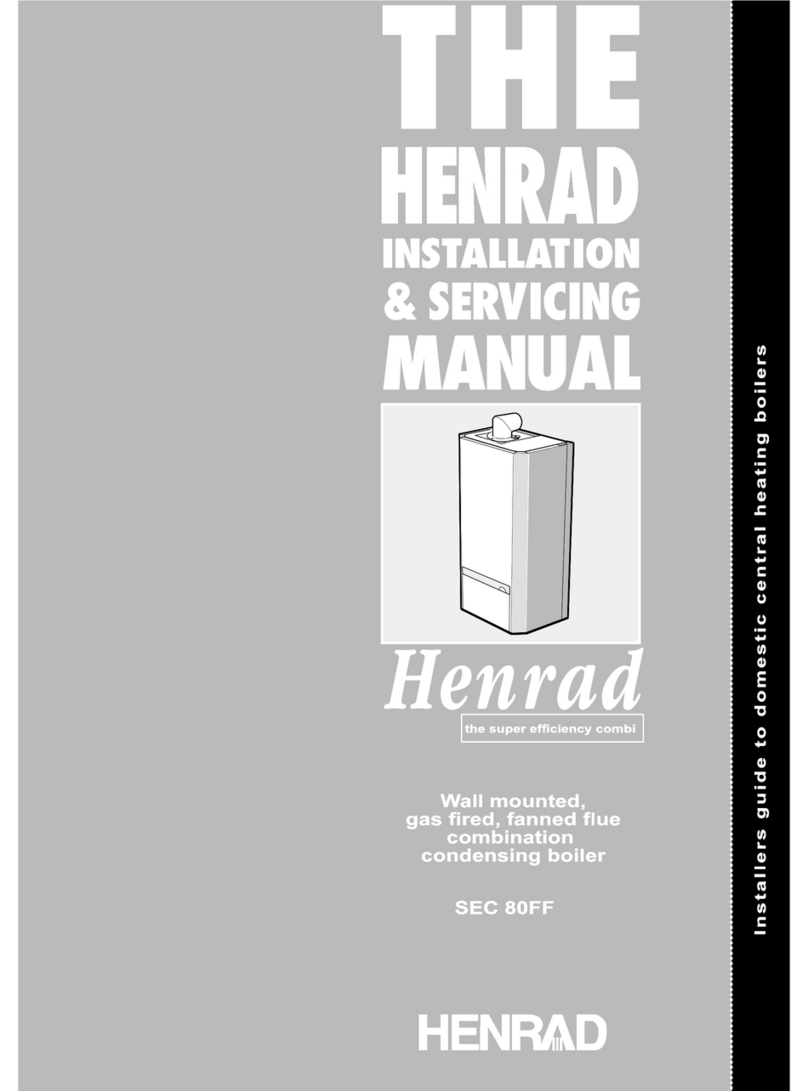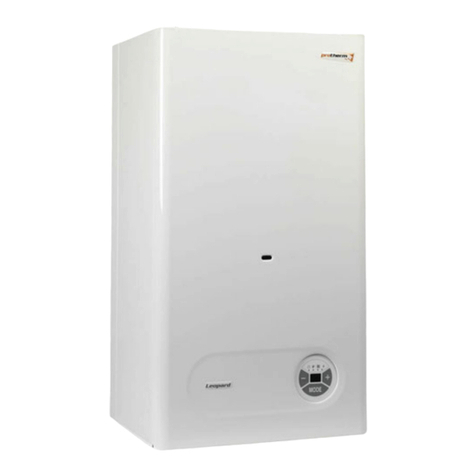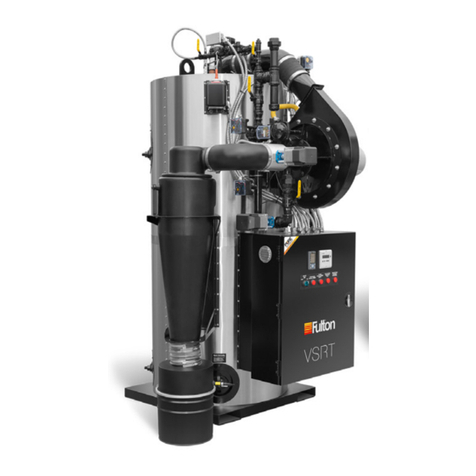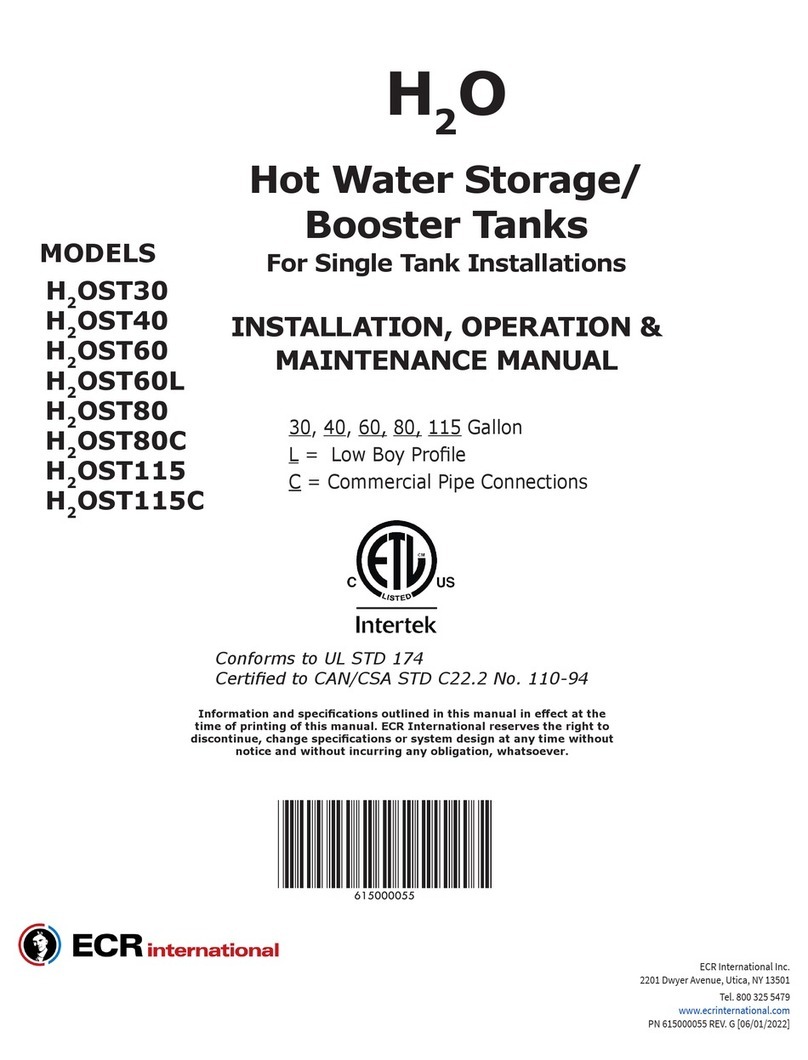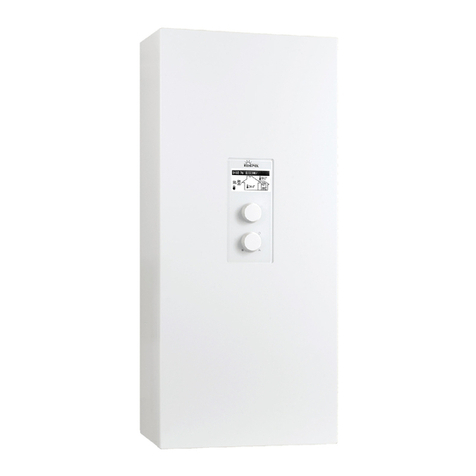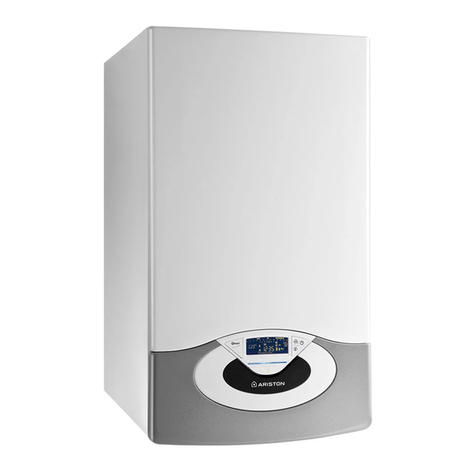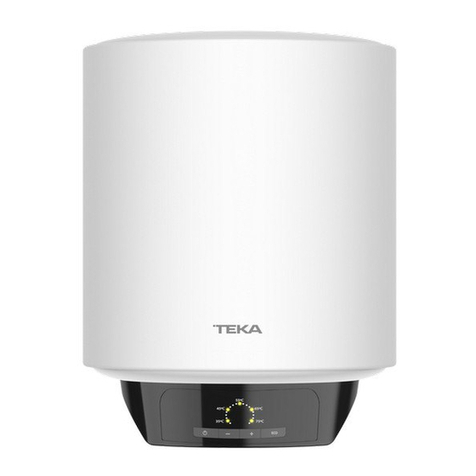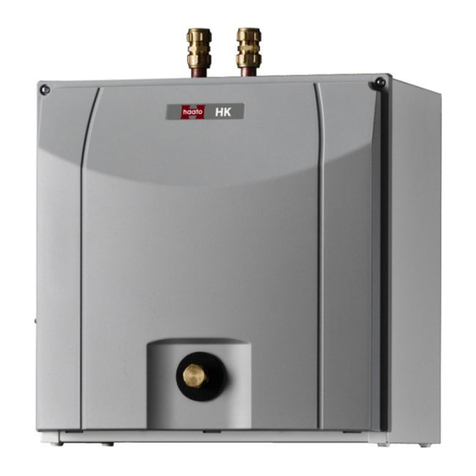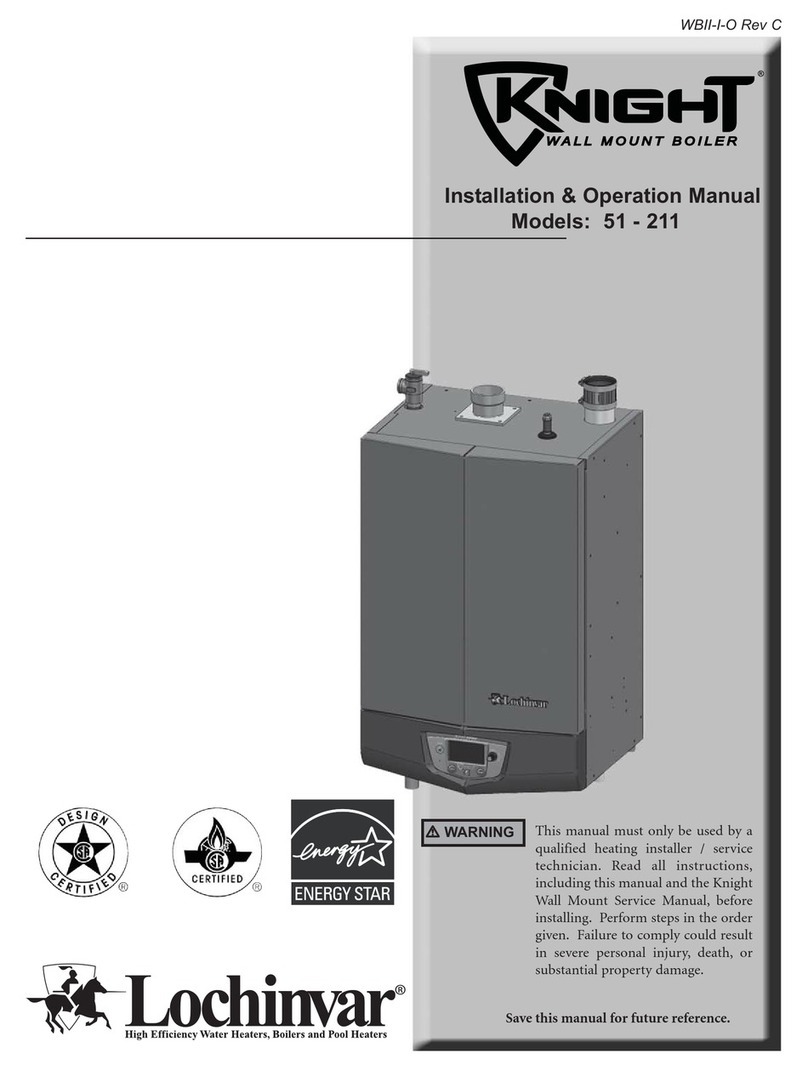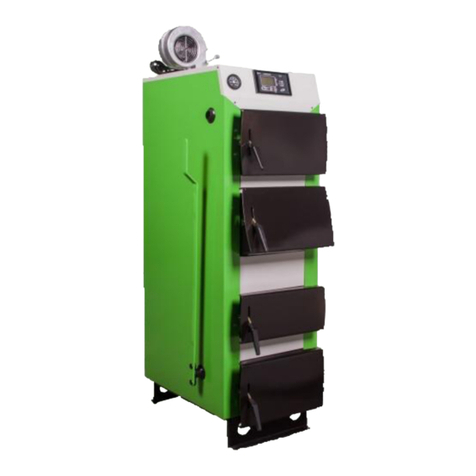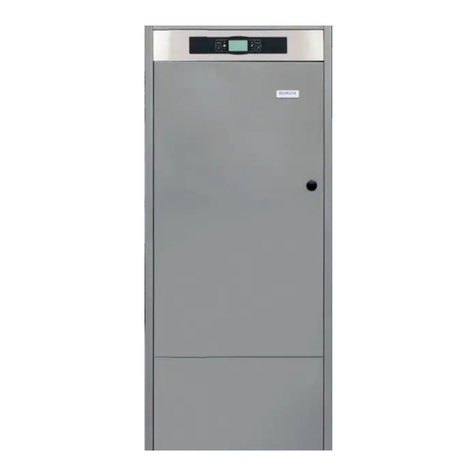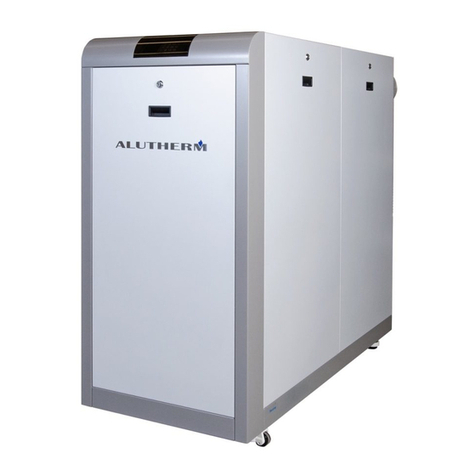
19
d. It is recommended that a water meter be installed on the
system fresh water intake to monitor the system for any
leaks by monitoring make-up water usage. Untreated
fresh water sources will introduce oxygen, minerals and
contaminants into the system.
e. Correct any system leaks prior to placing the boiler in operation.
Table 4.1: Recommended Water Treatment Products
for use in Stainless Steel Condensing
Boiler Applications
Domestic Heat System:
The Peak boilers use a high efficiency flat plate heat exchanger
to quickly heat cold domestic water. This plate heat exchanger
has small passageways that can become clogged with sediment
and scale of steps are not taken to protect it.
1. Water hardness is to be maintained between 50 ppm
CaCO3 (3gr/gal and 150 ppm CaCO3 (9 gr/gal).
2. A sediment filter is provided with the flow restrictor in the
unit. This filter should be checked annually. An additional
filter or y-strainer can also be installed prior to the unit.
3. Annual cleaning of the plate heat exchanger is also
recommended to prevent scaling.
C. OPERATING PARAMETERS
1. The Peak boiler is designed to operate in a closed loop
hydronic system under forced circulation. This requires the
system to be completely filled with water and requires a
minimum water flow through the boiler to operate effectively.
2. The minimum system pressure is 11.6 psig (80 kPa). The
maximum allowable pressure is 40 psig (275 kPa).
3. The recommended minimum system pressure for optimal
operation at higher temperature is 14.5 psi (100kPa).
4. The internal pump is sized appropriately to allow for the
minimum flow rate required through the heat exchanger.
Ensure that the piping up to the boiler is capable of handling
a minimum flow rate of 5.0 GPM to allow for proper flow
rates when the boiler is in CH mode.
WATER PIPING AND CONTROLS
Supplier
Fernox Sentinel Sotin ADEY
Universal
Cleaner
Restorer F3
or F5 X300 – –
Sludge
Remover
Cleaner F3
or F5 X400 Sotin 212 –
Inhibitors Protector
F1/Alphi 11 X100, X500 Sotin 212 M C 1+
Antifreeze Alphi 11 X500 – –
WARNING
Do not use petroleum based cleaners when cleaning
the boiler system. Damage to the gaskets found in
typical system components can occur resulting in
signicant property damage.
D. SYSTEM COMPONENTS
Figure 4.1 shows the symbol key for piping diagrams in this section.
The following are brief descriptions of system components.
1. Pressure/Temperature Gauge: A combination pressure/
temperature gauge is provided with each Peak boiler to be
mounted in the piping from the boiler supply to the system as
shown in Figures 4.2 & 4.3. Most local codes require this gauge.
2. Air Elimination: Closed loop hydronic systems require air
elimination devices. As the system water is heated, dissolved
oxygen and other gases will separate from the liquid. An air
elimination device (such as a TACO Vortech®Air Separator)
is required to remove the dissolved gases preventing
corrosion in the piping system and eliminating noise.
3. Expansion Tank: An expansion tank (such as a Bell &
Gossett Series HFT) is required to provide room for
expansion of the heating medium (water or glycol solution).
Consult the expansion tank manufacturer's instructions for
specific information regarding installation. The expansion
tank is to be sized for the required system volume and
capacity. In addition, be sure that the expansion tank is
sized based on the proper heating medium. Glycol solutions
may expand more than water for a similar temperature rise.
4. Y-Type Strainer or Filter Ball®Valve: Embassy recommends the
use of a strainer device in the system to prevent dirt or sediment
from clogging the heat exchanger. A 20 mesh stainless steel
screen is adequate to protect the heat exchanger. The strainer
should be cleaned often in the first several months of operation.
The Filter Ball®Valve from Jomar International incorporates a
strainer into a ball valve which allows the technician to isolate
the water circuit while cleaning the strainer.
5. Flow Control Valve: Flow control valves such as the TACO
Flo-Chek or Bell & Gossett Flo-Control™ are used to
prevent gravity circulation by incorporating a check valve
with a weighted disc.
6. Pressure Reducing Valve: A pressure reducing valve, such
as the Bell & Gossett B-38 or a TACO #329, is used in a
hydronic system to automatically feed water to the system
whenever pressure in the system drops below the pressure
setting of the valve. These valves should not be used on
glycol systems unless close supervision of the glycol solution
is practiced.
WARNING
CAUTION
Use only inhibited propylene glycol solutions which
are specically formulated for hydronic systems.
Ethylene glycol is toxic and may cause an
environmental hazard if a leak or spill occurs.
Use only inhibited propylene glycol solutions which
are specically formulated for hydronic systems.
Unlike automotive antifreeze, solutions for hydronic
applications contain corrosion inhibitors that will
protect system components from premature failure
due to corrosion.




















